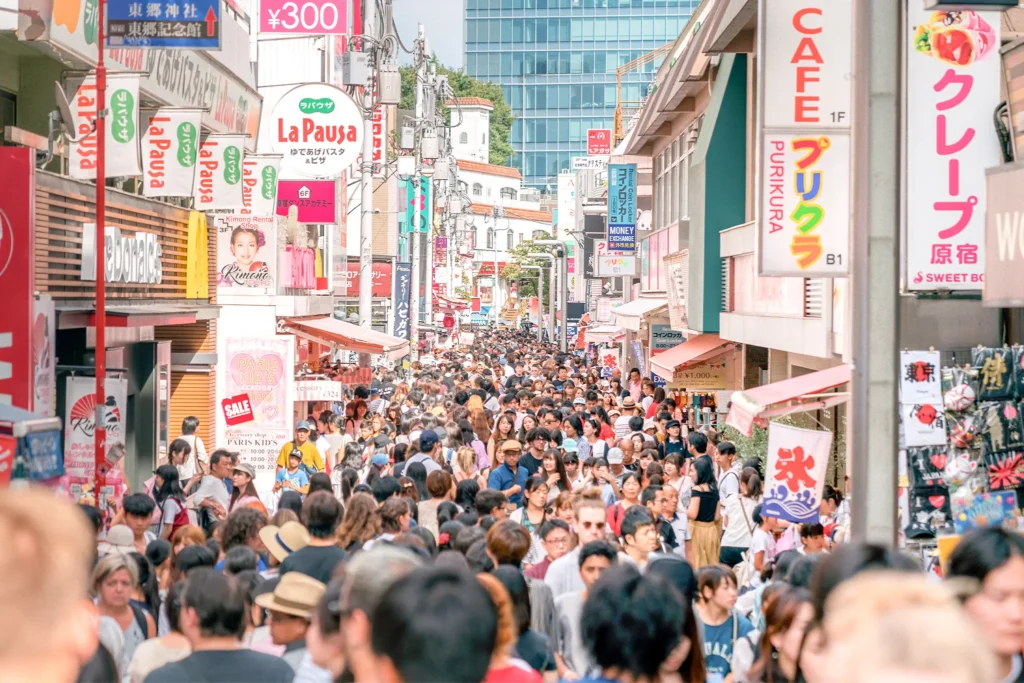
A recent study by the World Economic Forum (WEP) reports that Japan is taking a proactive stance towards dealing with the issue of overtourism.
In the report published on Tuesday, 13th May, WEP communications lead in Japan Naoko Tochibayashi and Mizuho Ota pointed out that the Japanese government has already begun to implement a variety of solutions, mostly localized, to tackle relevant issues.
However, the researchers noted that it still isn’t enough, and addressing the root cause of overtourism will require solutions that are both innovative and sustainable.
The report indicated that the Japanese government allocated JPY 15.82 billion for Emergency Measures aiming to prevent and mitigate overtourism along with improving the reception environment for foreign visitors for the fiscal year 2024.
In the country’s 2025 national budget, funding for overtourism measures constitutes 15 percent of the total; however, the bulk of these measures has been noticeably local rather than national in scope.
Every single initiative currently under implementation against overtourism lacks a comprehensive strategy that covers the entire nation, with attention primarily focused on popular destinations alone.
Japanese Tourism in Numbers
As reported on March 4 by The New York Post, the Japanese government has set a target for international arrivals to reach 60 million tourists by 2030.
This forecast is based on a report released by the Japan National Tourism Organisation (JNTO) on January 16, 2025, which documented a total of 36.9 million foreign arrivals to Japan by December 31, 2024, driven mainly by a weaker yen throughout the preceding year.
The total for 2024 exceeds that of 2019—the last year before the pandemic—signifying a significant year-on-year growth of 47.1 percent.
Travel agencies offering specialized Japan trips reported a 54 percent increase in bookings from families, groups of friends, and corporate clients.
“We Don’t Want Your Kind Here”
While these figures might seem promising from an economic perspective, they have burdened locals considerably over the last couple of years.
Japanese communities now face several challenges, including:
- Overstrained infrastructure and compromised service delivery
- Overcrowding in major cities such as Kyoto, Osaka, and Tokyo, alongside congested transportation lines.
- Residents have voiced concerns that tourists filling buses and trains disrupt their daily commutes, while fare increases exacerbate their dissatisfaction.
While businesses like hotels and restaurants may have initially welcomed the surge of tourists after the pandemic, they now find themselves grappling with resource shortages and diminishing service quality.
The Cultural Divide Widening
Local Japanese often perceive certain tourist behaviors—like loud conversations, cutting in line, or improper trash disposal—as disruptive or disrespectful.
Improving signage and translation efforts may assist but language barriers can still lead to communication difficulties.
Disruptive tourist behaviors have stirred social tensions, leaving some residents feeling marginalized, unwelcome, and unsafe in their own neighborhoods.
Mitigating the Effects of Overtourism
While no national-level response appears imminent, various organizations, companies, and even local communities in Japan are striving to counteract the negative effects of overtourism.
The WEP noted that Japan Airlines and Hoshino Resorts joined forces in October 2024 to promote lesser-known areas to incoming tourists. This initiative involved showcasing relatively overlooked “hidden gems” in their web campaigns and offers linking Japan Airlines tickets to accommodation at Hoshino Resorts.
Previously, in September of last year, Japan Airlines launched a campaign to boost regional tourism by providing free domestic tickets to international travelers arriving on foreign flights. This project aims to encourage exploration of less-visited regions and mitigate the impacts of overtourism, contributing to regional revitalization.
Simultaneously, several urban and prefectural capitals are making progress through the introduction of AI-driven applications that predict potential congestion, allowing local authorities to implement measures to curb visitor overflow at renowned tourist spots. Such applications are currently utilized by local governments in Okinawa and Hokkaido, with the latter even extending their use to assist residents in planning their trips or daily commutes.
However, most overtourism measures remain rooted in community-level efforts, and experts at WEP emphasize the necessity of initiatives fostering visitor dispersal.
Japan’s public-private partnerships aimed at mitigating overtourism must facilitate tourism to lesser-known regions while enabling strategies that prevent crowding, benefiting local economies, residents, and travelers alike.
